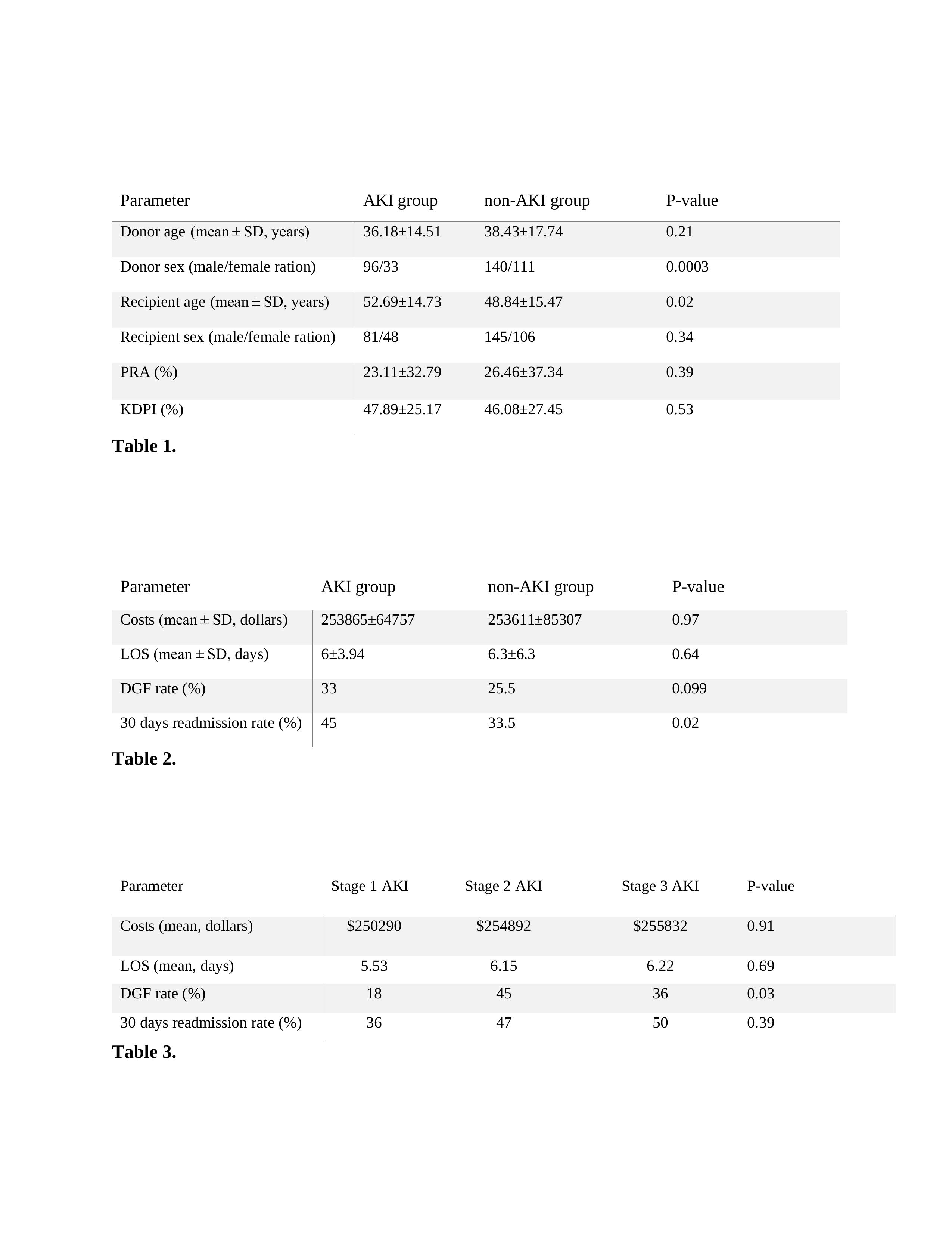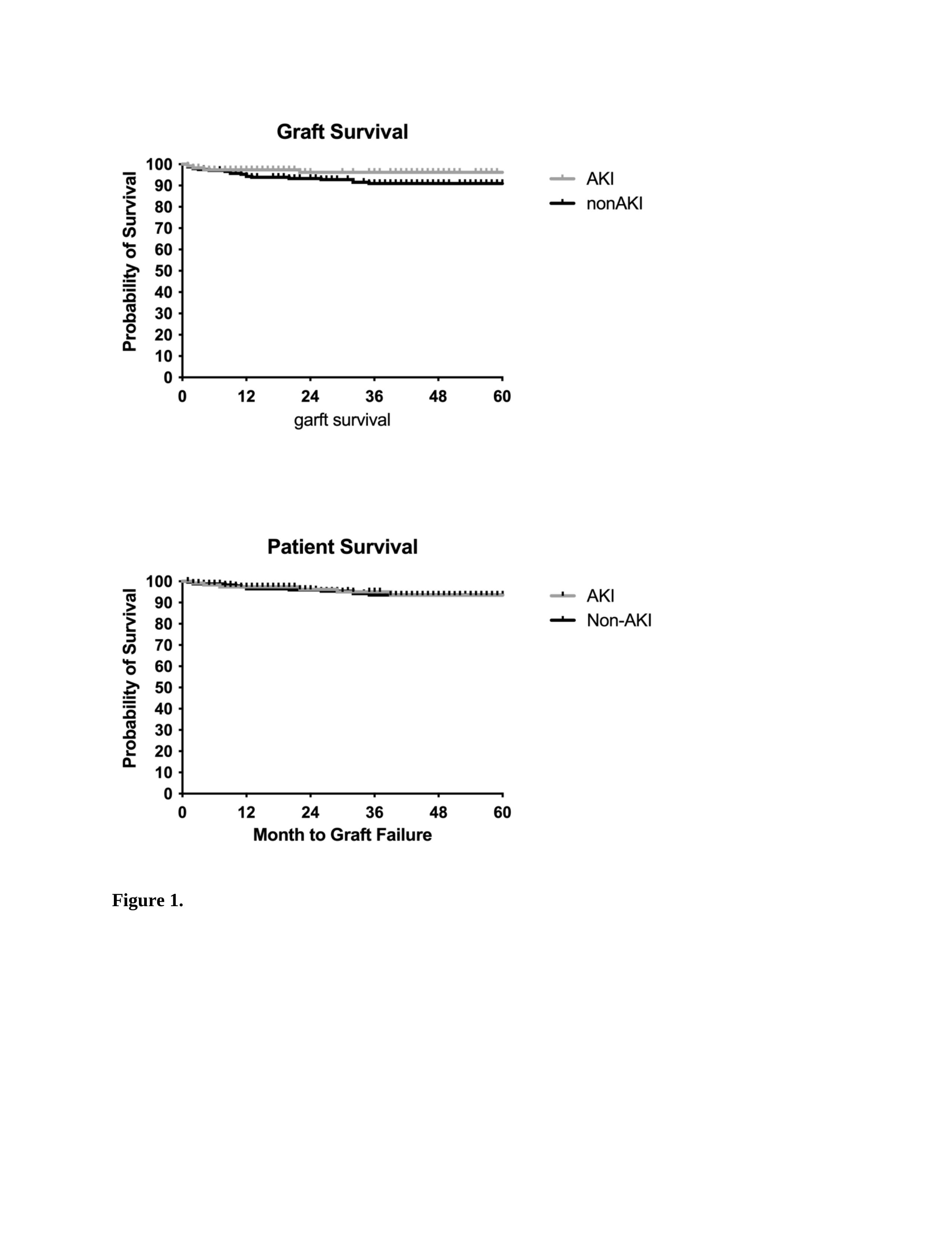Deceased donor kidney transplantation from donors with acute kidney injury: realities and costs
Mahmoudreza Moein1, Samir Iskhagi1, Rauf Shahbazov1, Angela Ball1, Sharon Loerzel1, Eman Shaban2, Reut Hod Dvorai3, Brian Gallay2, John Leggat2, Matthew Hanlon1, Reza Saidi1.
1Department of Surgery, Division of Transplantation, SUNY Upstate Medical University, Syracuse, NY, United States; 2Department of Medicine,Division of Nephrology, SUNY Upstate Medical University, Syracuse, NY, United States; 3Department of Pathology and Laboratory Medicine, SUNY Upstate Medical University, Syracuse, NY, United States
Introduction: The use of kidneys from deceased donors with acute kidney injury (AKI) is one of the options to expand donor pool. Several studied have reported on the transplantation of kidneys with donor AKI with favorable outcomes. The aim of this study was to investigate the outcomes of kidneys transplantation cases where deceased donors developed AKI before organ procurement.
Material and methods: We retrospectively reviewed the medical records of recipients from January 2016 to November 2021 in a single center. Outcomes in recipients of a kidney graft from a donor with AKI were compared with outcomes in recipients of a kidney graft from a donor without AKI (non-AKI group). Donor and recipient clinical characteristics with creatinine level, delayed graft function rate, length of stay, hospital charge, graft and patient survival rate were investigated.
Results: Total 380 consecutive deceased donor’s kidney transplantation recipients files were studies. The mean follow up time was 40 months. 129 (34%) kidneys were transplanted from AKI donors and 251 (66%) from non-AKI donors. DGF rate was 33% in AKI group and 25.5% in non-AKI group and a trend was mentioned (P= 0.099). 30 days readmission rate was significantly higher among AKI group comparing to non-AKI kidney recipient (45% vs 33.5%, P= 0.02). The mean overall costs of transplantation in AKI group were comparable ($253865 vs $253611 in non-AKI group) (P= 0.97). The mean length of stay (LOS) in AKI group was 6 ± 3.94 days and 6.3 ± 6.3 days for non-AKI group which was almost similar (P= 0.64). DGF rate was increased as AKI stage got higher (18% stage 1, 45% stage 2, 36% stage 3 AKI) (P= 0.03) but no significant difference between AKI stages in terms of LOS (5.53 stage 1, 6.15 stage 2, 6.22 stage 3 AKI P=0.69) and cost ($250290 stage 1, $254892 stage 2 and $255832 stage 3, P=0.91) was mentioned.
Conclusion: Our study shows transplant with donor AKI have comparable outcome in terms of DGF, graft and patient survival rates, hospital charge and length of stay. Although, the 30 days readmission was higher. Our study confirms that grafts from donors with AKI can be used safely and expand donor pool in kidney transplantation without increased cost.
Keywords: kidney transplantation, deceased donor, acute kidney injury, graft.



right-click to download
